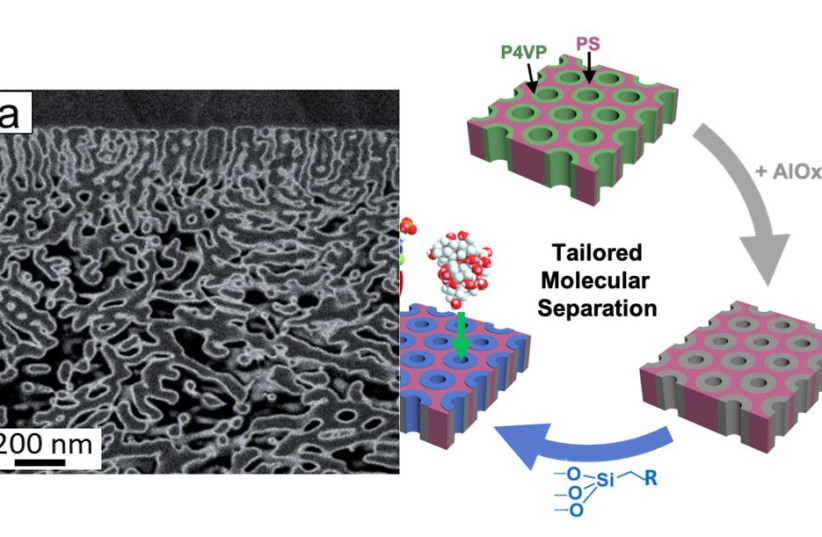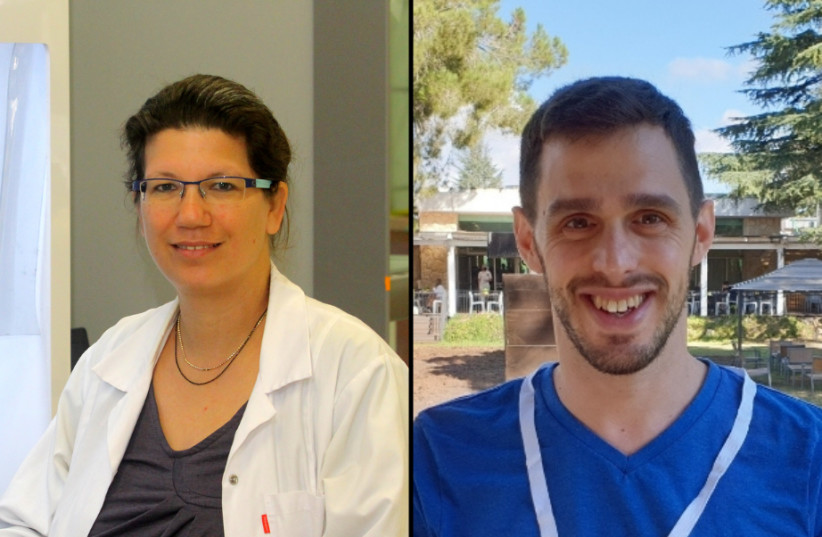Israeli, German researchers develop new method to produce membranes
A new method for fabricating membranes will provide a new, versatile and accurate tool for filtering particles.
By JERUSALEM POST STAFF, NOVEMBER 18, 2021

On the right: The fabrication process of the membranes. Metal
oxides are grown within the membrane channels to precisely tunes the
pore size, after which a reaction is generated to create a membrane
possessing unique physical properties. On the left: Cross-sectional
image of the membrane.
(photo credit: TECHNION SPOKESPERSON'S OFFICE)
Researchers from the Technion
and Helmholz-Zentrum Hereon Center in Germany have developed a new
method for fabricating membranes that can precisely filter various
nanoparticles, according to a new paper published in Advanced Materials.
The
study was led by Assistant Professor Tamar Segal-Peretz and Ph.D.
student Assaf Simon of the Wolfson Faculty of Chemical Engineering at
the Technion, along with Dr. Zhenzhen Zhang and Professor Volker Abetz
of the Helmholz-Zentrum Hereon Research Center.
The membranes aim to synthetically mimic the high-selectivity molecular separation
which takes place commonly in nature. In such separation, membrane
channels separate the interior of a cell from its outside environment
and regulate which materials can enter and exit the cell.
Creating such a membrane synthetically has faced difficulties, as
fabricating a membrane with high levels of well-ordered pores and high
uniformity and selectivity poses a complex engineering challenge, which
is made even more complex when such membranes are intended for extremely
small nanoparticle separation.
Despite
the challenges, the Israeli and German researchers managed to succeed
in fabricating such membranes using block copolymers — Spontaneously
self-assembled polymer molecules, in combination with metal oxide growth
on and within the pores of the block copolymer.

(Right) Assistant Professor Tamar Segal-Peretz (Left) Assaf Simon (credit: TECHNION SPOKESPERSON'S OFFICE)
The
process provides an excellent method for precisely tuning the pore size
and other properties of the membrane. The metal oxide is also an ideal
base for incorporating groups of atoms on the membrane surface with
distinctive chemical properties, such as electric charge and
hydrophobicity (water repellency).
Segal-Peretz
estimated that the breakthrough will provide a number of industries
with a new, versatile and accurate tool for the filtration of molecules,
pollutants and other particles.
PLEASE RECOMMEND THIS PAGE AND FOLLOW US AT:

No comments:
Post a Comment
Stick to the subject, NO religion, or Party politics